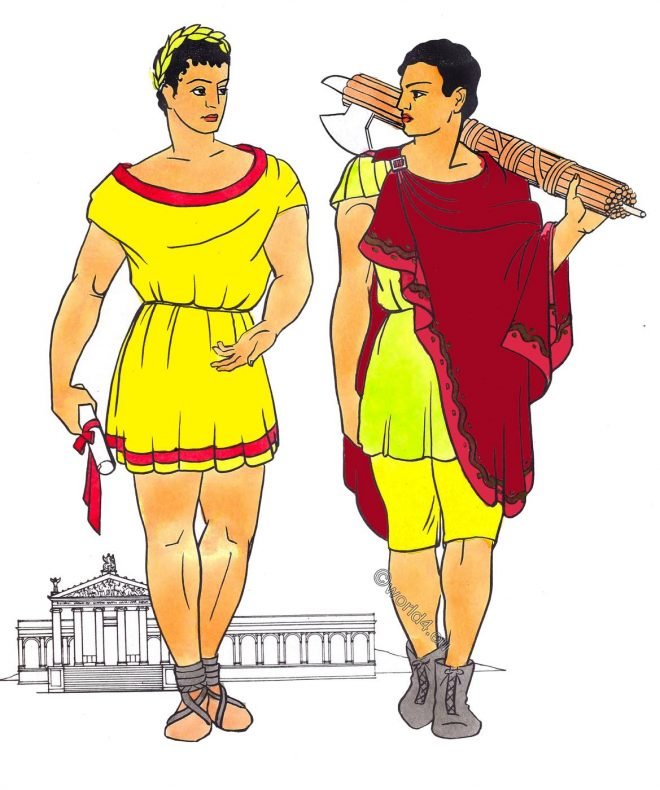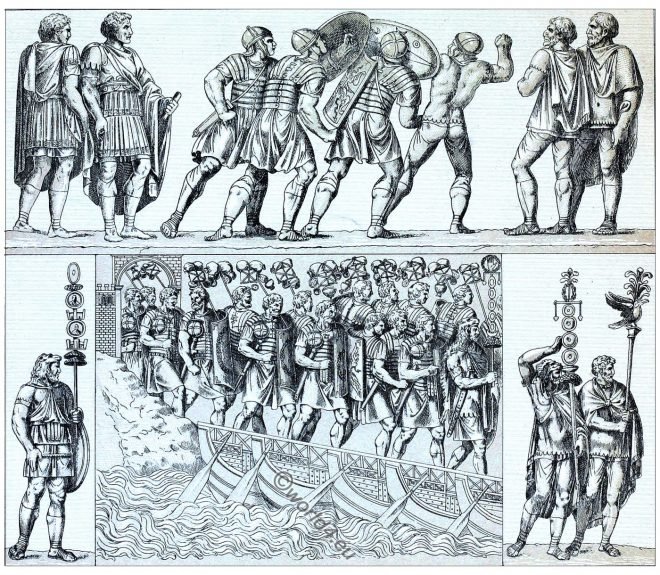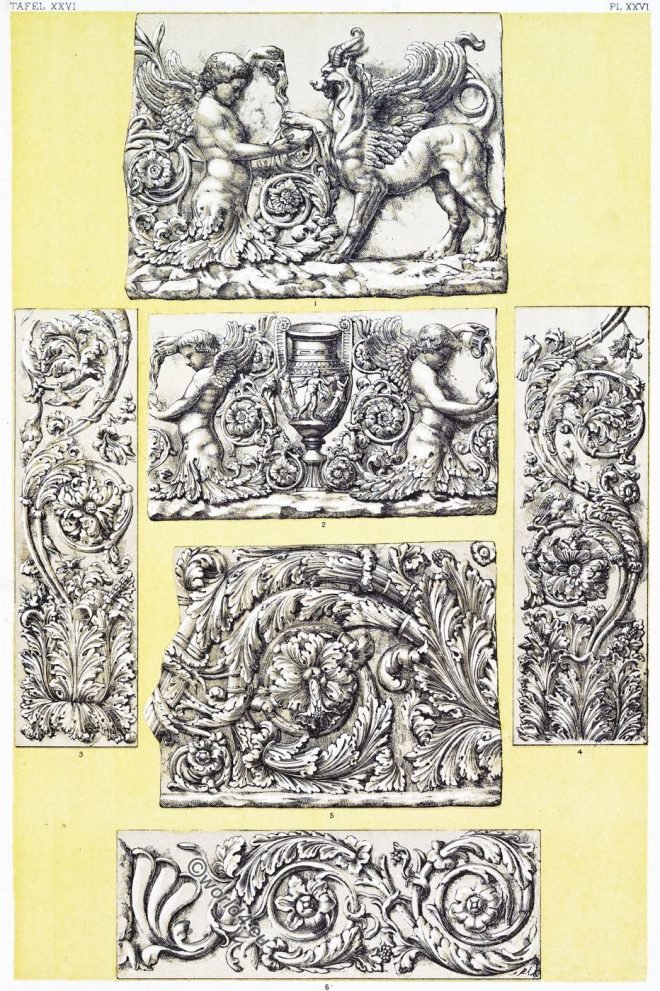Mycenae was one of the most important cities in Greece in pre-classical times, and the Mycenaean culture was named after it.
Category: Ancient
The usual Roman garment during the Republican Rome.
Rome during the height of its culture. Roman Republic. 500 B.C. – 30 B.C. The toga. The tunica. The abolla.
The Roman army. The legionary soldier. Equipment, assault weapons.
The Roman army. The legionary soldier. The complete equipment of the legionaries. The assault weapons. Military of the Ancient World.
The Byzantine Ornament of Antiquity and the Middle Ages.
The Byzantine style of art. The Romanesque style. Marble mosaic work. Examples of flowing foliage. Ornamental forms of ancient Persepolis. Ornamentation of the Middle Ages.
The costume of the Roman women. Republican Rome.
Republican Rome 500 BC – 30 BC.. The costume of the Roman women are very much like the Greek dress.
Greek-Roman furniture. Throne chair, Bisellium, Sella castrensis.
Various seating furniture and its use from the Greek-Roman history. Suppedaneum, Throne chair, Bisellium, Klismos, Diphros, Sella castrensis
A colossal head of Minerva, a specimen of very early Greek work.
Ancient Greek sculpture. Head of Minerva. A description of the collection of ancient marbles in the British Museum
The Roman Ornament. Corinthian and Composite Capitals. The Acanthus.
the Corinthian capitals. The pilasters from the Villa Medici are as perfect specimens of Roman ornament as could be found.
Greek-Roman art. Mosaics, painted bas-reliefs and wall paintings.
Greek-Roman art. Mosaics, painted bas-reliefs and wall paintings found in Herculaneum and Pompeii. Ornaments from panels, friezes, borders and mural paintings.
Roman Republic. Senator in the toga. A commoner in the paenula.
Roman Republic 500 BC. – 30 BC. A senator’s toga. The Paenula. A stripe, or clavis, down the center of the tunic, marks the wearer as a senator.










